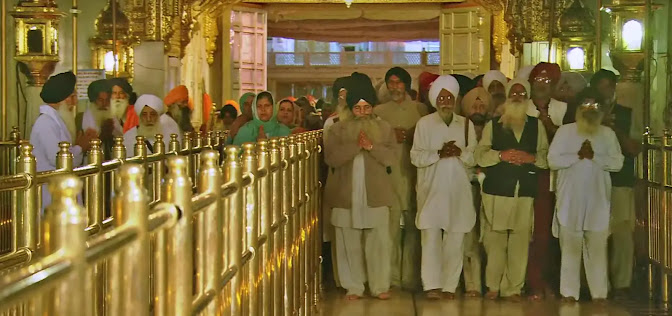The Golden Temple: A Spiritual Haven of Peace and Harmony
The Golden Temple, also known as Sri Harmandir Sahib, is a holy shrine for Sikhs around the world. Located in Amritsar, Punjab, it is a symbol of peace, harmony, and spiritual awakening. One of the most striking features of the Golden Temple is the tricolour flag that waves atop its gilded dome.
History OF Golden Temple
As advised by Sri Guru Amar Dass Ji (3rd Sikh Guru), Sri Guru Ram Dass Ji (4th Sikh Guru) started the digging of Amrit Sarovar (Holy Tank) of Sri Harmandir Sahib in 1577 A.D., which was later on brick-lined by Sri Guru Arjan Dev Ji (5th Sikh Guru) on December 15, 1588, and He also started the construction of Sri Harmandir Sahib. Sri Guru Granth Sahib (scripture of the Sikhs), after its compilation, was first installed at Sri Harmandir Sahib on August 16, 1604, A.D. A devout Sikh, Baba Budha Ji was appointed its first Head Priest.
The Golden Temple Amritsar India (Sri Harmandir Sahib Amritsar) has unique Sikh architecture. Built at a level lower than the surrounding land level, The Gurudwara teaches the lesson of egalitarianism and humility. The four entrances of this holy shrine from all four directions, signify that people belonging to every walk of life are equally welcome.
Patronage of Maharaja Ranjit Singh
The Golden Temple was first built in the late 16th century by the fifth Sikh Guru, Guru Arjan Dev Ji, as a central place of worship for the Sikh community. It was later reconstructed and expanded in the 19th century under the patronage of Maharaja Ranjit Singh, a prominent Sikh leader.
The Golden Temple is famous for its stunning architecture, including its gilded dome, intricate marble work, and serene Sarovar (holy tank) that surrounds it. The temple complex also features a community kitchen, known as the Langar, where free meals are served to all visitors regardless of their caste, creed, or religion. This tradition of providing free food, known as seva or selfless service, is an integral part of Sikhism and is practised in gurdwaras around the world.
The Golden Temple is not only a place of worship but also a centre for social, cultural, and educational activities. It has played a crucial role in the Sikh community's struggle for justice and equality and has been a site of historic events such as the Jallianwala Bagh massacre in 1919.
Today, the Golden Temple remains a beacon of peace, unity, and spirituality for people from all walks of life. Its message of love, compassion, and service to humanity continues to inspire millions of people around the world, making it one of the most significant spiritual and cultural landmarks of India.
Tricolour of Flag
The tricolour flag has a significant history and holds great importance in Sikhism. The flag is known as the Nishan Sahib, and it consists of three colours - saffron, white, and green. The saffron colour represents courage, the white colour signifies purity, and the green colour represents growth.
Spiritual significance for Sikhs
The flag has a profound spiritual significance for Sikhs. It is a symbol of the Khalsa, the community of initiated Sikhs, and represents their unshakable faith in God. The Nishan Sahib also serves as a reminder of the sacrifice and struggles of the Sikh Gurus and their followers.
The holy scripture of Sikhs
The flag is hoisted and lowered every day by a team of volunteers known as the sevadars. They perform this duty with utmost devotion and respect, and it is considered a great honour to be chosen for this responsibility. The hoisting of the flag is accompanied by the recitation of hymns and prayers from the Guru Granth Sahib, the holy scripture of Sikhs.
Symbol of Sikhism
The Nishan Sahib is not just a symbol of Sikhism; it is a symbol of unity and diversity. The tricolour flag represents the values of courage, purity, and growth, which are essential for building a peaceful and harmonious society. It also serves as a beacon of hope and inspiration for people from all walks of life.
In recent years, the tricolour flag of the Golden Temple has gained recognition and admiration beyond the Sikh community. Its striking colours and profound symbolism have become a source of inspiration for artists, designers, and social activists. The Nishan Sahib has also been used in various protests and demonstrations as a symbol of solidarity and resistance.
Latest News about Golden Temple
A woman was allegedly barred from entering the Golden Temple in Punjab's Amritsar because she had a Tricolour painted on her face. The incident was recorded on video and has since gone viral on social media, leading to backlash from numerous users
Conclusion
In conclusion, the tricolour flag of the Golden Temple is not just a piece of cloth; it is a symbol of faith, sacrifice, and unity. It represents the values that are essential for building a better world - courage, purity, and growth. The Nishan Sahib serves as a source of inspiration and hopes for millions of people around the world, and it will continue to be a powerful symbol of Sikhism and humanity for generations to come.
More Post : Solar Eclipse 2023





Comments